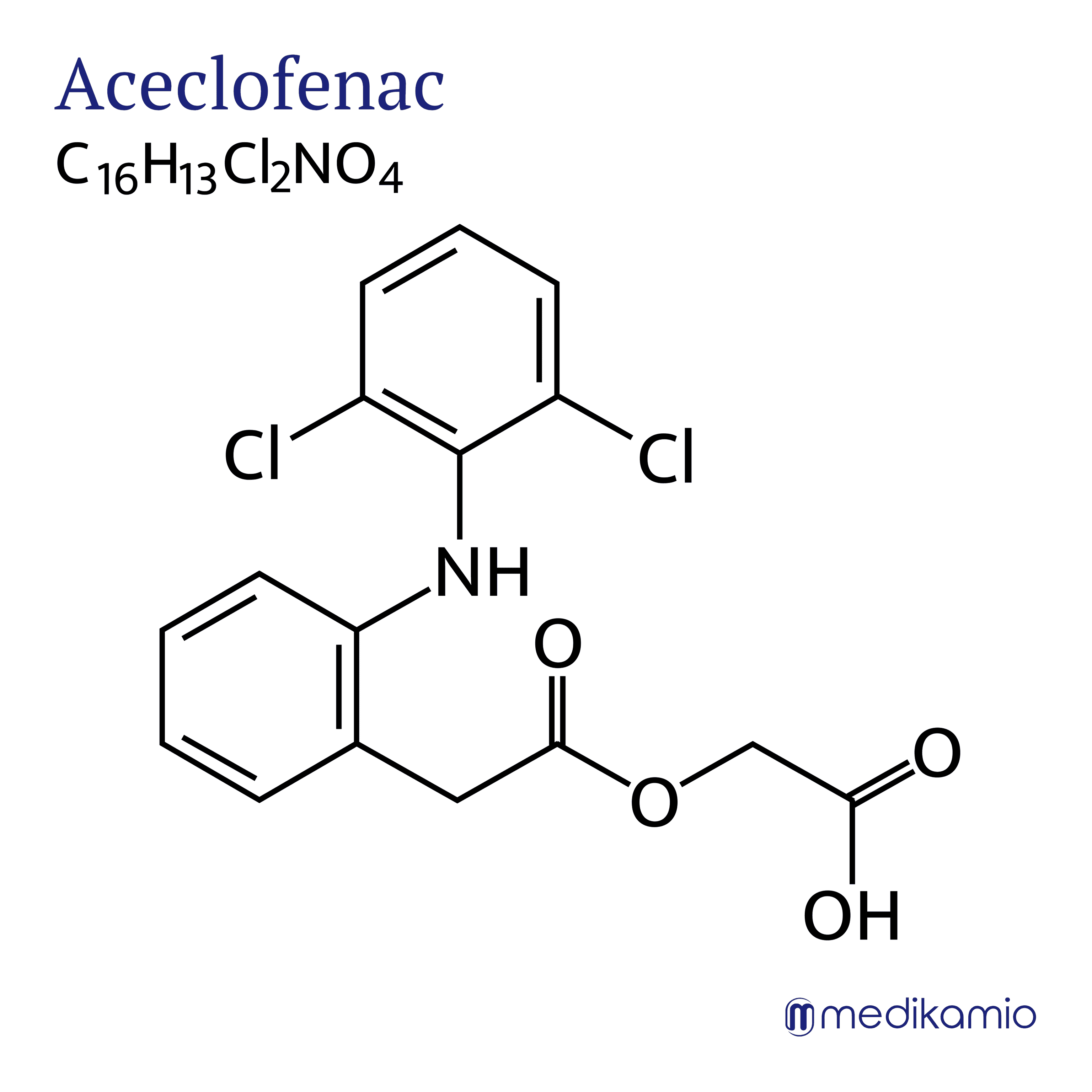Like other NSAIDs, aceclofenac works by inhibiting the enzymes cyclooxygenase I & II (COX-1 and COX-2). These two enzymes are significantly involved in inflammatory reactions. Cyclooxygenases 1 & 2 are responsible for the formation of inflammatory mediators. Inflammatory mediators are substances that influence inflammatory reactions. These include prostaglandin E2 (PGE2), cytokines, interleukins and tumor necrosis factors.
Aceclofenac is broken down by the liver and excreted in the urine. The bioavailability of aceclofenac, i.e. the percentage of the active substance that is available in the blood, is 60%. The half-life, i.e. the time the body needs to excrete half of the active substance, is 4 hours. The maximum plasma concentration (Cmax), i.e. the maximum concentration of the active substance in the blood plasma (liquid cell-free part of the blood), is reached after 1.25-3 hours.

